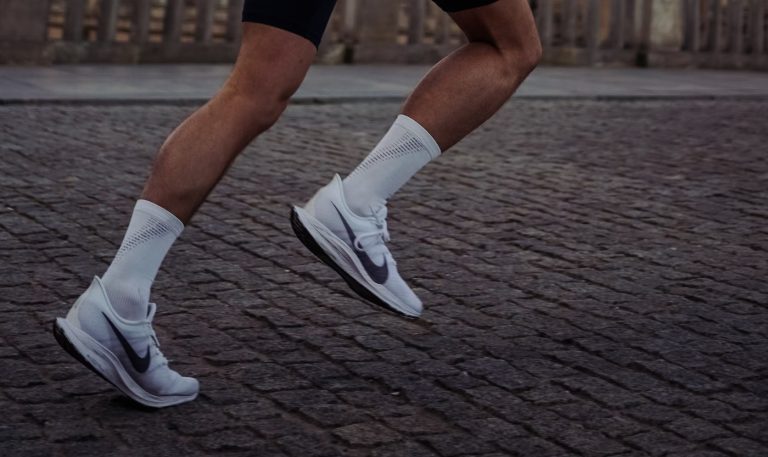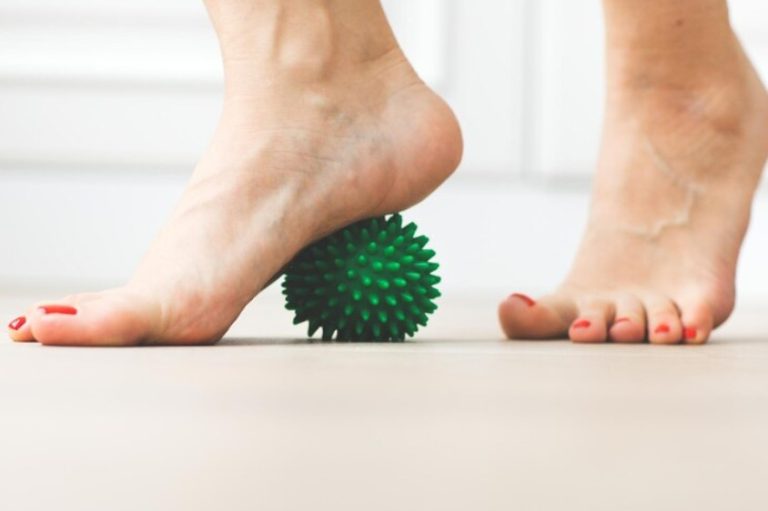Foot Elevator: Essential Tool for Enhanced Mobility and Comfort
Foot elevators are essential tools designed to support and elevate the feet and legs for those recovering from injuries or managing chronic conditions. They help relieve pressure on the foot and ankle, making recovery more comfortable and effective. These devices are often used in hospitals, rehabilitation centers, and homes to prevent complications like pressure sores and to promote proper blood circulation.
Using a foot elevator can significantly enhance a person’s comfort during recovery. It helps keep the foot elevated, reducing swelling and pain. Many options are available, including foam cushions and adjustable models, allowing users to find one that fits their specific needs.
As individuals seek ways to improve their recovery experiences, learning more about foot elevators can provide valuable insights. This article will explore different types of foot elevators, their benefits, and practical tips for choosing the right one.
History of Foot Elevators
Foot elevators, or lifts designed for lower extremities, have evolved significantly over time. Understanding their origins and advancements helps highlight their importance in mobility assistance and accessibility.
Origins and Development
The idea of elevating people or objects can be traced back to ancient civilizations. Early lifting devices, often operated by human or animal power, were developed as simple machines. Notably, Archimedes is credited with designing early hoists around 236 B.C.
As societies progressed, these concepts advanced. By the 19th century, the need for more sophisticated elevators grew. The first steam-powered passenger elevator was installed in 1857 in New York City. This marked a notable shift towards more complex designs that prioritized safety and efficiency.
Foot elevators specifically emerged in the late 20th century as part of a broader focus on assisting individuals with limited mobility. They catered to those who require help in moving from one level to another, especially in urban environments.
Advancements in Design
Design advancements have significantly improved foot elevators over the years. The introduction of electric-powered systems streamlined operation and increased safety. Modern foot elevators are equipped with features such as automatic doors and smooth-level landings, enhancing user experience.
Furthermore, advancements in materials have made these devices lighter yet more durable. Many contemporary models include ergonomic designs that ensure comfort for users. Innovations like remote controls and safety sensors further enhance functionality.
Today, foot elevators are designed to accommodate various needs, integrating with building architecture, ensuring accessibility in public and private spaces. They are not only crucial for personal mobility but also reflect a growing awareness of accessibility needs in modern design.
Benefits of Foot Elevation
Foot elevation brings several health benefits that can improve wellbeing. These include better blood circulation, reduced swelling and pain in the legs, and an enhanced healing process for various conditions.

Improved Circulation
Elevating the feet helps improve circulation in the lower body. When the feet are raised above heart level, gravity aids in reducing the pooling of blood. This can enhance blood flow back to the heart.
Better circulation can decrease the risk of conditions like deep vein thrombosis. It also helps deliver essential nutrients and oxygen throughout the body. Improved circulation is especially beneficial for individuals who sit or stand for long periods.
Reduced Swelling and Pain
Foot elevation is effective at reducing swelling and pain in the legs and feet. It helps drain excess fluid that may build up due to prolonged standing or sitting. This can be especially useful for those with conditions like edema or varicose veins.
When the feet are elevated, the body’s natural processes can work more efficiently. This position can also alleviate discomfort after physical activities. Many find that elevating their feet provides immediate relief from fatigue and strain.
Enhanced Healing Process
Elevating the feet can aid in the healing process for injuries and surgical recovery. It helps decrease inflammation and speeds up recovery times.
For individuals who have undergone foot or ankle surgery, keeping the feet elevated minimizes swelling. This position aids in reducing pain and can promote faster healing.
Additionally, it is crucial for individuals with chronic conditions like congestive heart failure to consult their doctor about proper foot elevation techniques to ensure safety and efficacy.
Types of Foot Elevators
Foot elevators come in various designs that cater to different needs. Each type offers unique features and benefits, making it essential to choose the right one for effective recovery or comfort.
Adjustable Foot Elevators
Adjustable foot elevators are versatile and can be modified to fit individual preferences. They usually come with a mechanism to change the angle or height, providing personalized support. This type is ideal for users recovering from injuries or surgeries, as it allows them to elevate their feet comfortably.
These elevators often feature sturdy materials to ensure stability. Many adjustable foot elevators also have a padded surface for extra comfort. Users can easily find a suitable position that relieves pressure and promotes better circulation.
Inflatable Foot Cushions
Inflatable foot cushions are portable and lightweight options. They can be quickly inflated or deflated, making them easy to transport or store. This type is particularly useful for those who travel or need a temporary solution for foot elevation.
Typically made from durable materials, these cushions provide support without being overly rigid. Users can also adjust the firmness by adding or releasing air. This flexibility helps in providing maximum comfort and relief for swollen feet or post-surgery recovery.
Foam Wedges
Foam wedges offer a stable and supportive option for foot elevation. They are made from high-density foam, which maintains its shape and provides solid support. This type is excellent for long-term use, particularly for individuals who need to keep their feet elevated for extended periods.
Foam wedges are available in various sizes and angles to accommodate different user needs. Their design often includes a sloped surface that helps reduce strain on the legs and feet. Many come with removable and washable covers, making them easy to maintain and hygienic for everyday use.
Choosing the Right Foot Elevator

Selecting the right foot elevator involves understanding material durability, size and portability, and compatibility with specific injuries or conditions. Each of these aspects plays a crucial role in ensuring comfort, support, and functionality during recovery.
Considerations for Material and Durability
When choosing a foot elevator, the material affects both comfort and longevity. Common materials include foam, gel, and memory foam.
- Foam: Offers good support and often has a lightweight design.
- Gel: Provides cooling comfort and conforms to the foot.
- Memory Foam: Adapts to foot shape, enhancing comfort but may be heavier.
Durability is also critical. Look for products made with high-quality materials that resist wear and tear. This ensures that the foot elevator remains supportive throughout recovery. Additionally, some cushions come with removable covers for easy cleaning, which can extend their lifespan.
Size and Portability Factors
Size matters when selecting a foot elevator. It should provide adequate space for the foot while fitting well within the user’s living area.
- Dimensions: Consider both length and width to ensure comfort.
- Height: Different conditions may require varying elevations.
Portability is another factor to consider. Lightweight options are easier to move and adjust as needed.
- Foldability: Some models can fold for storage or travel.
- Handles: Elevators with handles can be easier to lift.
By assessing these factors, one can ensure that the chosen foot elevator meets personal needs.
Compatibility with Injuries or Conditions
Different foot elevators serve specific injuries or medical needs. For individuals recovering from injuries like fractures or surgery, an elevator designed for stabilization is essential.
- Cast Compatibility: Some foot elevators, like the ProCare Elevating Foam Cushion, are specifically made for users in leg casts.
- Elevation Needs: Certain conditions require higher elevation to reduce swelling or discomfort.
Understanding these compatibility factors can help individuals select foot elevators that provide the right support and healing they require. Adjusting the foot elevator to suit personal needs can significantly enhance comfort during recovery.
How to Use a Foot Elevator
Using a foot elevator correctly can enhance comfort and aid recovery. Proper positioning and knowing how long and how often to use it are crucial for effectiveness.
Proper Positioning Techniques
To use a foot elevator effectively, the first step is to ensure proper positioning. The foot should rest comfortably on the elevator, with the heel elevated to reduce pressure on the heel and ankle.
Adjust the height of the foot elevator if possible, so it aligns with the knee. This alignment helps maintain a natural leg position and encourages blood flow. If it is designed with contours or supports, these should cradle the foot to prevent slipping.
When placing the foot, make sure the toes are not overhanging the edge. This position protects against unnecessary strain. Regular checks for comfort are important to prevent irritation or pressure points.
Duration and Frequency of Use
The duration and frequency of using a foot elevator will vary based on individual needs. Generally, it is recommended to start with short periods, about 15 to 30 minutes, to assess comfort levels.
Patients recovering from injuries may find relief with longer sessions, up to 1-2 hours, depending on the doctor’s advice. It is important to not keep the foot elevated for too long continuously, as this can restrict blood flow.
Regular breaks should be scheduled to allow the foot to rest in a neutral position. A good practice is to use the foot elevator several times a day, especially during rest periods or while sleeping, but always following specific medical advice.
Care and Maintenance of Foot Elevators
Proper care and maintenance of foot elevators ensure their longevity and hygiene. This section covers essential practices for cleaning, hygiene, storage, and handling. Following these guidelines will help maintain functionality and safety.
Cleaning and Hygiene
Regular cleaning of foot elevators is critical to prevent the growth of bacteria and ensure patient comfort.
- Daily Cleaning: Wipe down surfaces with a mild detergent and water solution after each use. This helps remove sweat and bodily fluids.
- Deep Cleaning: Every week, clean the entire unit with a disinfectant safe for soft surfaces. Follow manufacturer instructions for compatible products.
- Drying: After cleaning, allow the foot elevator to air dry completely before use. Avoid direct sunlight, which can degrade materials over time.
- Inspect for Damage: Check for any tears or worn areas during cleaning. Damaged elevators should be repaired or replaced promptly.
Storage and Handling
Proper storage and handling of foot elevators contribute to their lifespan and effectiveness.
- Storage Location: Store foot elevators in a clean, dry area. Keep them away from excessive moisture or heat sources to prevent damage.
- Avoiding Compression: Do not stack heavy objects on top of foot elevators. This may cause deformation or loss of support.
- Handling: Use care when moving foot elevators. Dragging or dropping can cause structural harm.
- Checking for Wear: Before each use, inspect the foot elevator for any signs of wear or damage. Address any issues before placing the product back in service.
Clinical Research on Foot Elevation
Clinical research highlights the significance of foot elevation in managing various conditions related to swelling and healing. Studies have shown its potential benefits for improving circulation and enhancing wound healing, particularly in diabetic patients.
Evidence-Based Benefits
Foot elevation can help reduce swelling in the lower extremities. It assists in promoting venous return and decreasing pressure in the affected areas. This is particularly beneficial for patients with chronic conditions such as lymphoedema.
The elevation of the legs can also lead to improved oxygen levels in tissues. For instance, a study indicated that transcutaneous partial oxygen tension levels decreased after foot elevation, which may affect healing. Such evidence suggests that proper foot positioning is essential in treatment protocols.
Current Studies and Findings
Recent research has focused on the application of foot elevation in clinical settings. A study involving 33 patients with diabetic foot demonstrated how elevation can facilitate better management of their conditions. Different demographic groups were considered, with findings suggesting that most patients responded well to elevation techniques.
Moreover, a study evaluated the efficacy of a simple foot elevator for diabetic ulcer treatment. Results showed notable improvements in patient comfort, emphasizing the need for practical tools in clinical practice. Such findings underscore the ongoing exploration of effective interventions using foot elevation.
Personal Experiences with Foot Elevators
Many users report positive experiences when using foot elevators, highlighting their impact on comfort and recovery. Insights from both patients and healthcare professionals provide valuable perspectives on how these devices function in real-life scenarios.
Patient Testimonials
Patients often share how foot elevators improved their recovery process. One individual mentioned using a specialized foam cushion after leg surgery. It helped keep their leg elevated and stable, reducing pain.
Another patient shared their experience with the Rolyan Foot Elevator. They appreciated the adjustable plantar strap that kept their foot in the correct position. This feature made a noticeable difference in their comfort levels.
Others noted that elevating their feet helped reduce swelling and speed up healing. Many reported a significant increase in overall satisfaction with their recovery process after incorporating foot elevators into their routines.
Healthcare Professional Recommendations
Healthcare professionals frequently recommend foot elevators for various recovery needs. Physical therapists emphasize the importance of keeping the leg elevated to reduce swelling and promote healing. They often suggest products like the ProCare Elevating Foam Cushion for patients in leg casts.
Doctors advise their patients to use foot elevators during recovery from surgery or injury. They highlight how these devices help maintain proper alignment and prevent complications like skin breakdown.
Physical therapists also suggest pairing foot elevators with leg exercises to improve circulation. This combination can enhance rehabilitation results, ensuring that patients gain strength while maintaining comfort. It demonstrates the importance of foot elevators in professional care settings.
Frequently Asked Questions
Foot elevators serve various functions, particularly in aiding recovery and improving comfort in daily life. The following questions address how a foot elevator can assist users in different situations.
How can a foot elevator aid in recovery after surgery?
A foot elevator can help elevate the legs, reducing swelling and improving circulation. This position supports healing by minimizing pressure on the surgery site and promoting blood flow.
What benefits does using a foot elevator bring to someone who sits at a desk all day?
Using a foot elevator can relieve pressure on the lower back and reduce discomfort from prolonged sitting. It encourages better posture and blood flow, decreasing the risk of developing issues associated with sedentary behavior.
In what ways does a leg elevation pillow differ from regular pillows?
A leg elevation pillow is designed specifically to support the legs at an angle, promoting circulation and reducing swelling. In contrast, regular pillows may not provide the same anatomical support needed for effective elevation.
Can using a heel elevator improve squatting form and effectiveness?
Using a heel elevator can help maintain a better squat form by allowing the heels to remain flat on the floor. This positioning can improve balance and help engage the proper muscles during the movement.
What guidelines should be followed for proper use of a leg elevator for chairs?
When using a leg elevator with a chair, it should be positioned so that the legs are comfortably elevated but not creating strain. It is essential to adjust the height according to individual comfort and ensure the feet remain supported.
How does elevating the feet and legs help with circulation during prolonged periods of sitting or lying down?
Elevating the feet promotes venous return, helping blood flow back to the heart. This can reduce the risk of swelling and discomfort experienced during long periods of immobility.







